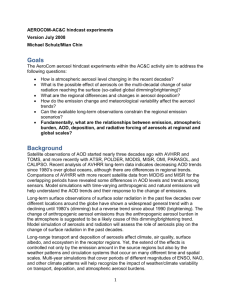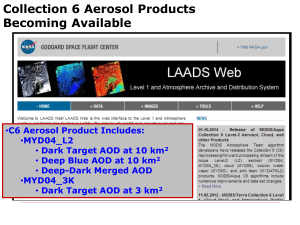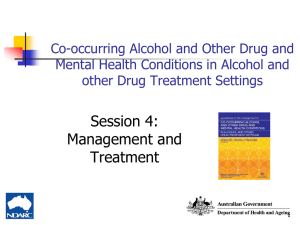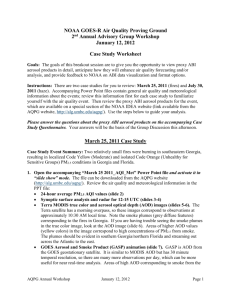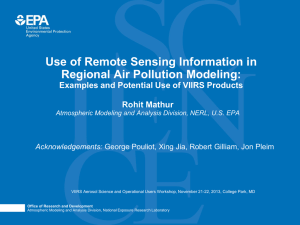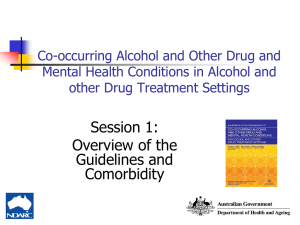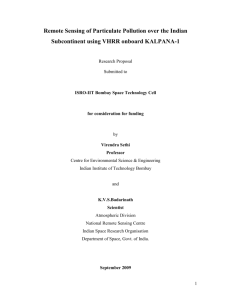Three stories about aerosols
advertisement
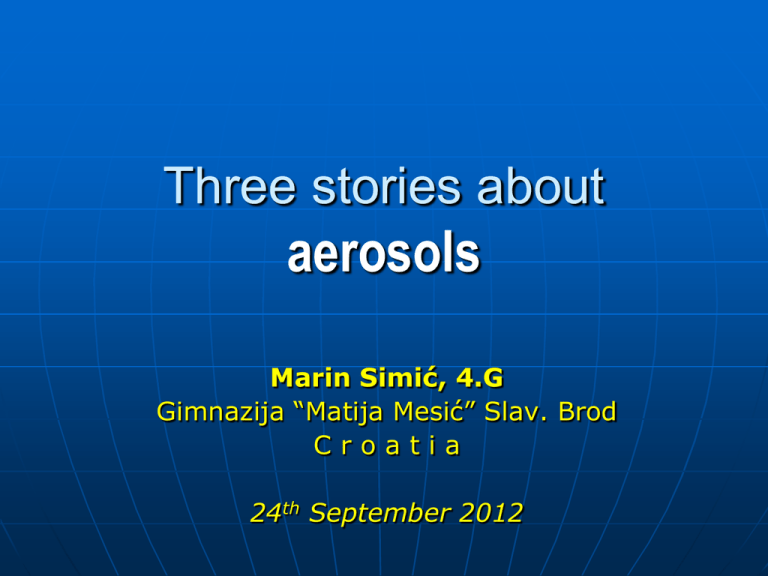
Three stories about aerosols Marin Simić, 4.G Gimnazija “Matija Mesić” Slav. Brod Croatia 24th September 2012 I. STORY: “There’s something sometimes in our atmosphere” Solar radiation in the Earth atmosphere Incoming solar radiation i=io exp (- m ∙ (Φa+ Φg+ ΦNOx+ Φw+ ΦO3+ Φr)) i io m Φ - intensity that reaches Earth’s surface - intensity at the top of the atmosphere - atmosphere optical mass - optical thickness (depth) a - aerosols / absorption and scattering g - atmospheric gases /absorption NOx - nitrogen oxides/ absorption w - water vapour / absorption O3 - ozone /absorption r - Rayley scattering on O2 and N2 molecules- “blue color of the sky” Atmosphere optical depth i=io exp (- m ∙ (Φa+ Φg+ ΦNOx+ Φw+ ΦO3+ Φr)) iλ=i0,λexp(- m ∙ Φλ) iλ the intensity of a narrow beam of sunlight of a particular wavelength that reaches Earth's surface I0 λ the intensity of sunlight just above Earth's atmosphere Φλ atmosphere optical thickness – extinction coefficient of the incoming radiation due to scattering and absorption on molecules and aerosols m relative air mass Φa aerosols optical thickness is the degree to which aerosols prevent the transmission of light by absorption or scattering of light. - the integrated extinction coefficient over a vertical column of unit cross section Relative air mass - the path length relative to that at the zenith at sea level relative optical mass = S/D = 1/sinθ for θ < 30o II. STORY: What we can do about it? Aerosol measurements made carefully according to the protocol with the GLOBE sun photometer should be accurate to within less than about 0,02 AOD units. The accuracy of measurements made with a GLOBE sun photometer is comparable to measurements made with other types of sun photometers. In comparison even operational “professional” sun photometers claim accuracies of no better than 0,01 AOD. Efforts of scientists… The very first calibrations of LED sun photometers were made at Seguin Texas, in December 1998, and later at Mauna Loa Observatory, Hawaii on several occasions. The experiment made by Mims and his team, as well as measurements performed by other scientists show that AOD obtained from the LED detector is consistent with data obtained from Sun photometers with narrowband optical filters. Langley’s calibration plot for GLOBE LED sun photometers were presented in several papers prepared by GLOBE scientific team and other scientists (Brooks 2001, Mims III 1998) . GLOBE Sun Photometer The true is: Students can reliably make the required measurements and LED based Sun photometers give results that compare favourably with conventional filter based instruments even thought their optical properties are significantly different. Our efforts together… More than 120 GLOBE schools around world are conducting aerosol measurements on daily basis and have reported around 80.000 data on AOD since the project started. In 2010 there were four GLOBE sun photometers operating in Croatia and 5000 measurements Student’s project Medicinska skola Zagreb and II Gimnazija Zagreb prepared together very interesting project on air quality in Zagreb. They took measurements on the same days and compare the AOD values. Beside that they compare the official data on suspended particles and also use bio indicators as a measure of air quality. High values of AOD, no matter what the cause, may be linked to human health through their influence on respiratory system. Atmosphere Transmission in Zagreb The connection with science… Students are encouraged to compare their measurements with other ground and satellite based measurements. Such comparison can serve both as a check on GLOBE measurements and on the performance of other sun photometers. III. STORY: How does it impacts our present, our future? Energy budget : by directly scattering and absorbing radiation Water cycle: by serving as condensation nuclei during cloud formation and by influencing precipitation Biogeochemical cycle: vulcanic eruptions, dust storms, erosion Human health impact the quality of the air that we breathe and the health of all living organisms Don’t forget… Information about the concentration, size distribution, and variability of aerosols in the atmosphere and AOD is needed for climate studies, for comparison with satellite data, to track events that alter aerosol concentrations and to understand the global distribution and variability of aerosols. Routine ground based AOD observations are of outmost importance for the calibration and validation of AOD retrievals from satellites. In addition they are necessary to correct for aerosol effects in the retrieval of other satellite products. And we are not allone… Today, several networks use handheld LED Sun photometers as ground base instruments, and determine AOD values and validate satellite data according to measurements performed by LED Sun photometers. Besides networks operated by students and volunteers, like GLOBE and The Haze network, some are operated by national weather service or Institutes like The Chinese Sun Haze meter Network that started in 2004 as the very first standard network established to measure AOD through China (Xin 2007). The networks are collaborating with Aerosol Robotic network (AERONET) and the Moderate Resolution Imaging Spectroradiometer (MODIS). Literature I. 1. Aničić J. et al., 2010: Kakav zrak udišemo u središnjem I zapadnom dijelu Zagreba? (Proceedings of the 13 Annual Croatian GLOBE Conferences, Zadar, available on www.vnovak.hr/globe/smotra2010/zadar_10_proje kti.html) 2. Boersma, K.F. and J.P. de Vroom, 2006: Validation of MODIS aerosol observations over the Netherlands with GLOBE student measurements, Journal of Geophysical Research, 111, D20311, doi:10.1029/2006JD007172 3. Brooks, D.R, and F.M. Mims III, 2001: Development of an inexpensive hand held LEDbased Sun photometer for the GLOBE program, Journal of Geophysical Research, 106, 4733-4740, doi:10.1029/2000JD900545 Literature II. 4. Mims III, F. M., 1992: Sun Photometer with Light-Emitting Diodes as Spectrally Selective Detectors, Applied Optics, 31, 6965-6967 5. Mims III, F. M. , 1998: An Inexpensive and Accurate Student Sun Photometer with LightEmitting Diodes as Spectrally Selective Detectors, Proceedings of the Third Annual GLOBE Conference, 232-239 6. Xin, J., et al., 2007: Aerosol optical depth (AOD) and Ångström exponent of aerosols observed by the Chinese Sun Hazemeter Network from August 2004 to September 2005, Journal of Geophysical Research, 112, D05203, doi:10.1029/2006JD007075 Literature III 7. gaw.web.psi.ch 8. www.globe.gov


